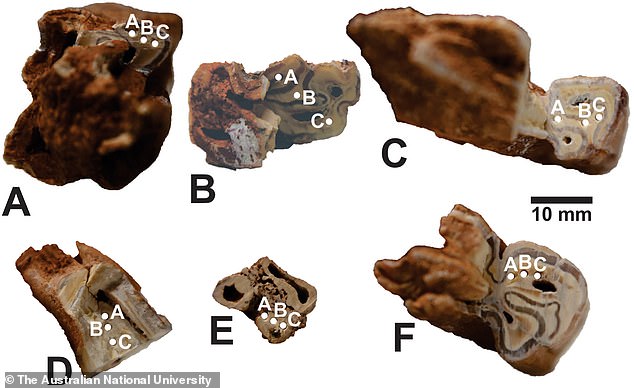Archaeologists have discovered “surprising” new evidence suggesting Neanderthals were smarter than previously thought.
Excavations near the Pyrenees in Spain have yielded more than 29,000 artifacts, including stone tools and animal bones, suggesting ancient hominid primates were skilled and intelligent hunters.
Animal bones discovered at the site show that our ancestors planned their meals based on the environment around them and developed specific tools to kill large animals, such as bison, or smaller ones, such as rabbits.
“The findings revealed that Neanderthals were able to adapt to their environment, challenging archaic humans’ reputation as slow-moving cavemen and shedding light on their survival and hunting skills,” the researchers said.
Excavations near the Pyrenees in Spain yielded more than 29,000 artifacts, including stone tools and animal bones, suggesting ancient hominid primates were skilled and intelligent hunters.
Researchers from the Australian National University (ANU) have been combing the foothills of Abric Pizarro, a site dating to between 100,000 and 65,000 years ago during a period called MIS 4, for clues about the extinct species.
The region is home to a large number of caves and rock shelters that were once home to Neanderthals.
“Our surprising findings at Abric Pizarro show just how adaptable Neanderthals were,” said lead author Dr Sofia Samper Carro.
‘The animal bones we have recovered indicate that they successfully exploited the surrounding fauna, hunting deer, horses and bison, but also eating freshwater turtles and rabbits, implying a degree of planning rarely considered for Neanderthals.’
According to the researchers, this new knowledge challenges the widely held belief that Neanderthals only hunted large animals, such as horses and rhinoceroses.
“Through the bones we are finding, which bear cut marks, we have direct evidence that Neanderthals were capable of hunting small animals,” said Dr. Samper Carro.
‘The bones from this site are very well preserved and we can see marks of how the Neanderthals processed and butchered these animals.
‘Our analysis of stone artefacts also demonstrates variability in the type of tools produced, indicating the ability of Neanderthals to exploit the resources available in the area.’

“The findings revealed that Neanderthals were able to adapt to their environment, challenging archaic humans’ reputation as slow-footed cavemen and shedding light on their survival and hunting skills,” the researchers said.
The team created a 3D map to plot where each artifact was found in the excavation, allowing them to more accurately interpret the possible relationship between each tool and Neanderthal food.
“We make a three-dimensional map of each of the remains found that are larger than one or two centimetres. This makes our work slow, and we have been excavating some of these sites for more than 20 years, but it becomes a record of the sites with unique precision,” said Dr. Samper Carro.
‘We are interested in knowing how the different data, from stone tools to bones and homes, relate to each other.
‘This more thorough excavation gives archaeologists information about how Neanderthals lived and how long they were in an area.
“It’s not just the individual materials that give us clues, but also the exact location where they are found in relation to other materials at the site, which helps us understand how and when Neanderthals visited these sites. Did they settle there or were they just passing through?”
Shedding light on this crucial transitional period helps archaeologists get closer to solving a mystery that has plagued researchers for decades: what drove Neanderthals to extinction?
According to the researchers, the discovery of sites such as Abric Pizarro, from this specific and poorly documented period, provides information about how Neanderthals lived when modern humans were not yet in the area and shows that they were thriving.

To facilitate the new study, more than 29,000 artifacts measuring more than 2 centimeters each, including stone tools and animal remains such as teeth and bones, were mapped in 3D across the excavation site. This 3D map helped interpret the possible relationship between each tool and each Neanderthal meal.
“The unique site at Abric Pizarro offers insight into Neanderthal behaviour in a landscape they had inhabited for hundreds of thousands of years,” said Dr Samper Carro.
‘Neanderthals disappeared about 40,000 years ago. Suddenly, modern humans appeared in this region of the Pyrenees and the Neanderthals disappeared. But before that, Neanderthals had already been living in Europe for almost 300,000 years.
‘They clearly knew what they were doing. They knew the area and they knew how to survive for a long time.
‘One of the most interesting things about this site is having this unique information about when Neanderthals were alone and living in harsh conditions and how they thrived before modern humans came along.’


